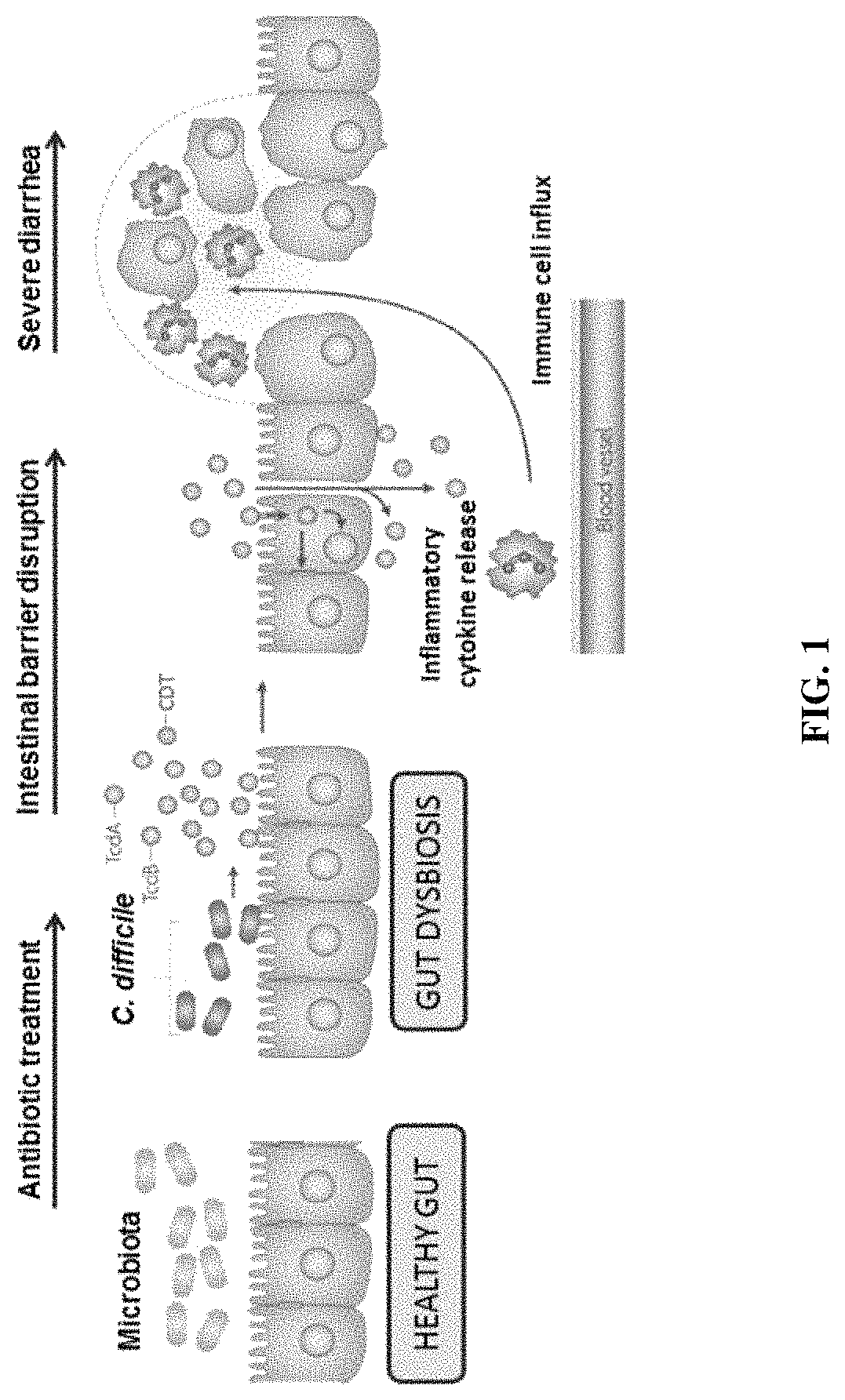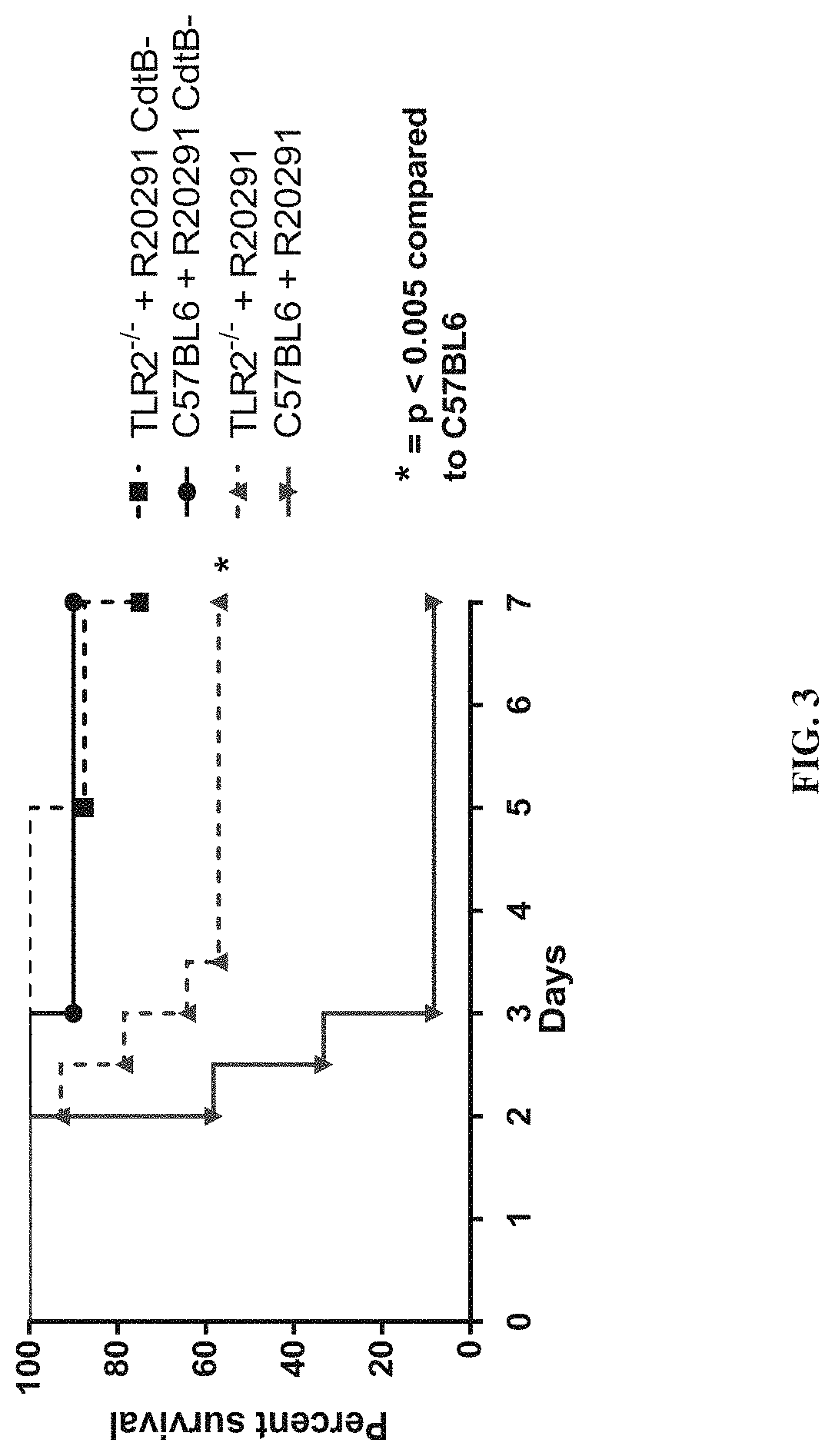Compositions and methods for treating clostridium difficile infection
a technology of clostridium difficile and compositions, applied in the direction of antibacterial agents, peptide/protein ingredients, antibacterial medical ingredients, etc., can solve the problems of 15% mortality, achieve the effects of reducing mortality and severity of infection, stimulating il-33 expression, level and activity, and reducing symptoms
- Summary
- Abstract
- Description
- Claims
- Application Information
AI Technical Summary
Benefits of technology
Problems solved by technology
Method used
Image
Examples
embodiments
[0194]The present application provides compositions and methods useful for preventing or treating a Clostridium difficile (C. difficile) infection in a subject in need thereof. In one embodiment, the method comprises administering to the subject a pharmaceutical composition comprising a pharmaceutically-acceptable carrier, an effective amount of IL-33 or biologically active fragments or homologs thereof or an effective amount of a stimulator of IL-33. In one aspect, the composition further comprises an additional therapeutic agent. In one aspect, IL-33 is recombinant IL-33. In one aspect, the method increases survival of the subject. In one aspect, it protects against CDT induced mortality. In one aspect, the subject is treated before the infection as a preventative measure. In one aspect, the treatment reduces morbidity and mortality.
[0195]The present invention further encompasses agents or combinations of agents identified using the methods of the invention.
[0196]The invention fur...
examples
[0392]Summary—A series of experiments disclose that IL-33 promotes a protective host immune response during hypervirulent C. difficile infection. Interleukin-33 (IL-33) is a member of the IL-1 family of cytokines and functions both as an alarmin, released from cells upon death, and as a cytokine capable of inducing type-2 immunity (17). After release, IL-33 binds to its primary receptor, ST2, that is expressed on a variety of innate and adaptive cells including macrophages, dendritic cells, group 2 innate-lymphoid cells, eosinophils, regulatory T cells, and T helper 2 cells (18).
[0393]The data demonstrate that CDT toxin increases virulence via a TLR2 dependent mechanism. Furthermore, treatment with recombinant interleukin-33 (IL-33), a protein upregulated in guts of protected TLR2− / − mice, protects from associated mortality and weight-loss.
Materials and Methods
[0394]Mice and Clostridium difficile Infection
[0395]Experiments were carried out using sex matched 8-12 week old C57BL6 and ...
PUM
| Property | Measurement | Unit |
|---|---|---|
| weight loss | aaaaa | aaaaa |
| pH | aaaaa | aaaaa |
| mole fraction | aaaaa | aaaaa |
Abstract
Description
Claims
Application Information
 Login to View More
Login to View More - R&D
- Intellectual Property
- Life Sciences
- Materials
- Tech Scout
- Unparalleled Data Quality
- Higher Quality Content
- 60% Fewer Hallucinations
Browse by: Latest US Patents, China's latest patents, Technical Efficacy Thesaurus, Application Domain, Technology Topic, Popular Technical Reports.
© 2025 PatSnap. All rights reserved.Legal|Privacy policy|Modern Slavery Act Transparency Statement|Sitemap|About US| Contact US: help@patsnap.com



